***UPDATE (6/9/2023, 1:05PM): a BikePortland reader just alerted us to a letter in the Early Assistance meeting packet (page 3 in the 4/25/23 EA pdf here) which indicates that the zoning change requested by the developer would allow for approximately 307 new units to be built. The report from the April Early Assistance meeting showing bureau responses is not yet available, but BikePortland will be following this story as it unfolds.***
What’s up with Alpenrose?
I can’t say how many times I have casually asked people that question over the past year, without ever really doing the work of finding out.
But now I know that the answer is — “a lot.”
So let’s take a tour of what’s going on with this major development in southwest…
The past five years
The Alpenrose campus was home not only to an operating dairy, but also a velodrome, Little League playing fields, and Dairyville—a faux frontier town that would come alive during Christmas. Cyclists had been racing at the Alpenrose Velodrome, and on the grounds adjacent to it, for nearly 60 years before it closed permanently in 2021.
Suffice it to say, Alpenrose has been an iconic location for a number of different communities for many years.
But things changed in 2019 when the Cadonau family, descendants of the farm’s 1891 founder, sold the dairy business to competitors Smith Brothers Farms, with Smith Brothers Farms leasing the dairy facilities and the Cadonau family retaining ownership of the 51-acre property.
The sale was contentious, though. One faction of the Cadonau family sued the other to block it. The sale moved forward anyway, and the judge ordered the family into arbitration to settle their ownership disagreement. What eventually resulted was that a new entity, Alfa Shattuck LLC (controlled by the pro-sale faction of the family), took ownership of the property.
Shortly after the dairy sale to Smith Brothers Farms, the Little League announced that it would be looking for a new venue for its World Series events. And in 2021, Alpenrose permanently closed bike racing events and other uses of the property.
… and here’s the latest
In April of this year, Alfa Shattuck took an initial step forward with its plans to subdivide the property into 193 (UPDATE, 12:57 AM: and possibly as many as 307) single and duplex housing units with an Early Assistance meeting—a pre-application exchange of information in which the developer reveals general plans and the city bureaus indicate what the city will be looking for in a building permit application.
What’s at stake
I spoke yesterday with Marita Ingalsbe, President of the Hayhurst Neighborhood Association (NA), where Alpenrose is located. Ingalsbe has done a truly impressive job of keeping abreast of this very complicated land use process.
She told me that “transportation is the community’s biggest concern.”
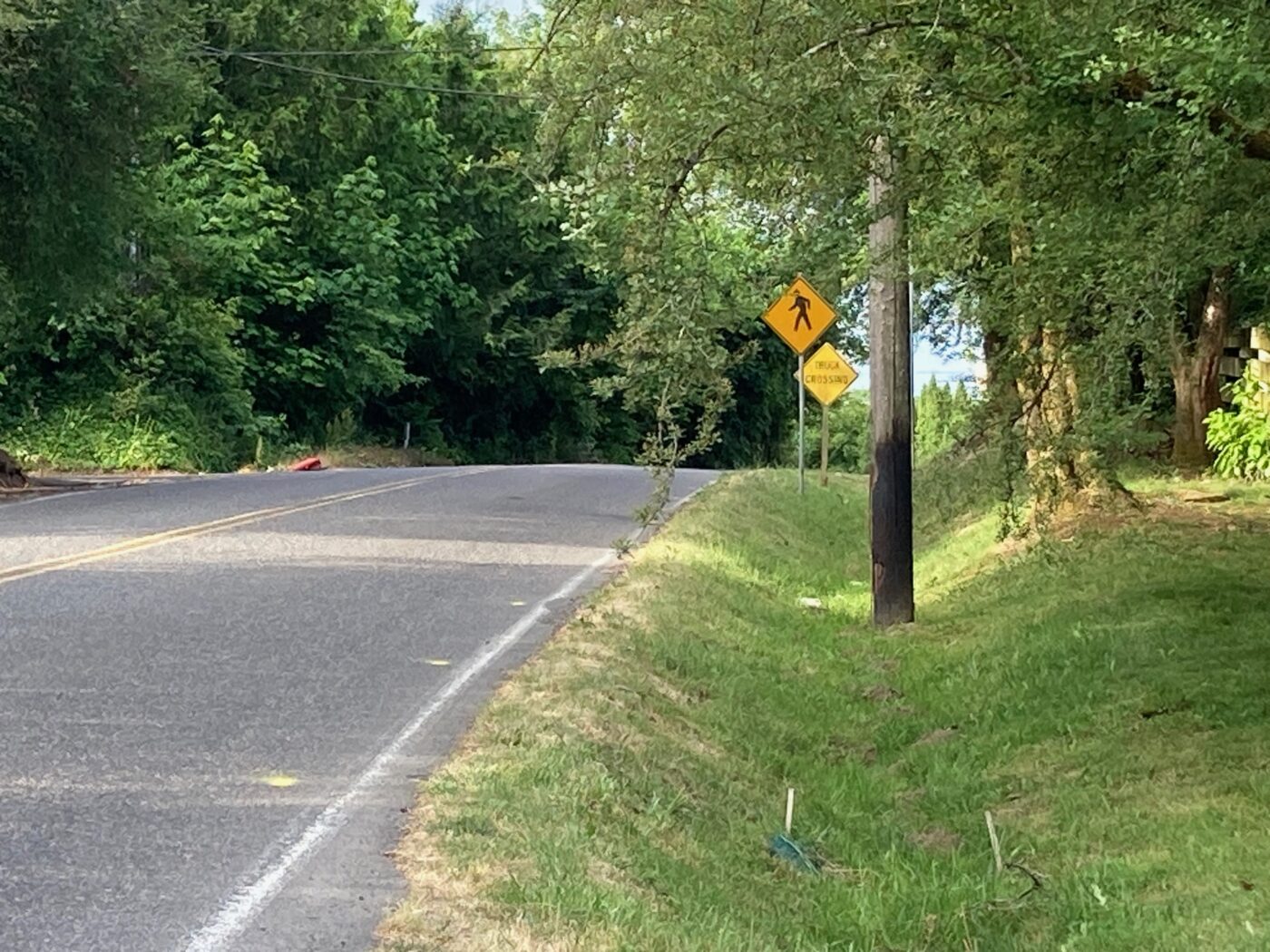
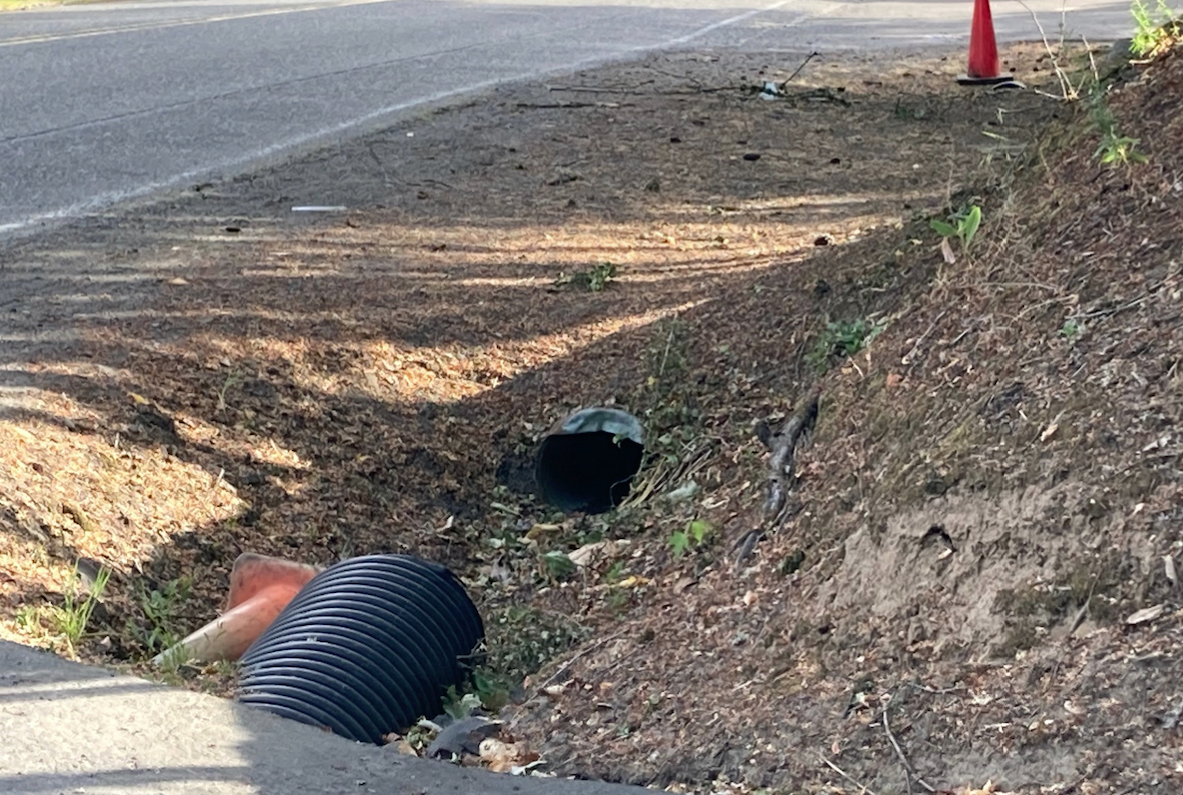
Alpenrose sits on SW Shattuck Road, a typical southwest Portland two-lane collector which lacks both a safe walking space and bike lanes. It appears that stormwater run-off from the street flows into open ditches on the side of the road. This means that required frontage improvements, like building a sidewalk or widening the road for a bike lane, might not be possible without putting in an expensive on-site stormwater facility.
“It would be wonderful if we could safely walk and bike on Shattuck,” remarked Ingalsbe. But recent policy statements from the Bureau of Environmental Services suggest the odds are against that happening:
… incremental stormwater improvements may not be possible in SW Portland because of the existing lack of infrastructure and downstream capacity limitations.
Locals are also concerned about the Hemstreet Heights neighborhood to the west of Alpenrose, in Beaverton. The small roads in that neighborhood will lead from the property to SW Oleson Rd and its notorious “six corners” intersection at Beaverton-Hillsdale Highway. Also known as “crash corner,” neighbors worry it cannot safely handle the car traffic from nearly 200 new residences.
Some good news
But neighbors would like to see more than just transportation improvements. They have worked tirelessly for two years to “advocate for a balanced proposal that will make the development the best it can be for the community.” This includes advocating for some higher density, affordable housing on-site, and honoring the legacy of the Alpenrose campus by building sports facilities on the acreage.
Three area neighbors, including Ingalsbe, joined together to form Friends of Alpenrose. They have met with the Bureau of Planning and Sustainability, Portland Parks, Washington County, representatives from Commissioners Rubio’s and Ryan’s office, Metro representative Duncan Hwang, Beaverton’s Neighborhood Association Committee—
I’m going to stop, but I’m only about a third of the way through their list of meetings.
Let’s just say they’ve been working hard, and that there is some good news. 10%, or about five acres, of the site is required to be park or open space and Portland Parks parks is interested in acquiring some of that land for multi-purpose ball fields.
And Ingalsbe also assured me that the Red Electric Trail route, which runs through a northern section of the property, would be an improved right-of-way in the development.
Holding the city accountable in a shifting political landscape
But the transportation improvements the neighborhoods would like to see are are coming forward at a time when both the city and state have made recent moves to loosen building code requirements in response to the housing shortage. The controversial HB 3414, currently hung up in the Oregon legislature, limits the ability of cities to deny developer-requested variances (exceptions) to code requirements. Typical variances involve getting out of making frontage improvements like sidewalks and bike lanes.
And recently in the City of Portland, Commissioner Carmen Rubio surveyed stakeholders of the permitting process with the question, “What are the top five requirements the City of Portland should consider suspending or modifying to support increased housing productions?”
So the Hayhurst Neighborhood Association and the Friends of Alpenrose face headwinds as they advocate for safe places to walk and bike. But they are a savvy bunch. At their last meeting, the HNA hosted Joan Frederiksen and Mary Hoffmann from Portland’s Bureau of Planning and Sustainability to outline the permitting process that the Alpenrose development will need to follow. It’s a complicated development path which requires a “Land Division with Environmental Review to create four tracts/lots, and 2) a Comprehensive Plan Map Amendment and Zoning Map Amendment review to change the zoning on the site from R10 to R7.” The advocates are preparing themselves for this process.
As Portland transitions to a new form of government, it is important to keep in mind the historic role neighborhood associations have played—in fact were designed to play—in holding city government accountable. You can see that in the NA notification requirements that are part of permitting building.
Ingalsbe and I broached the subject of whether the accountability workload carried by NA volunteers has become excessive, especially when it comes to land use. She agreed that it might be nice to have paid employees in city council district offices carry some of the load.
And hopefully that will happen, but it will really depend on whom Portlanders vote into office. Southwest Portlanders would benefit from having an elected representative who understands how tightly joined land use and transportation are, and how both depend on adequate stormwater facilities.
Historically underserved community
As best I can tell, government officials use the phrase “historically underserved communities” as a euphemism for racial and ethnic minorities. But when I hear “historically underserved community,” my mind turns to southwest Portland.
The City of Portland began annexing the region from Multnomah County about half a century ago. The County did not require the infrastructure, like drain pipes under the roads, that is needed to build sidewalks, so southwest joined the City without sidewalks or the means to easily add them.
In the intervening decades, the City of Portland has not done enough to rectify this situation. Consequently, this part of town is now ill-prepared to absorb the new housing coming its way.

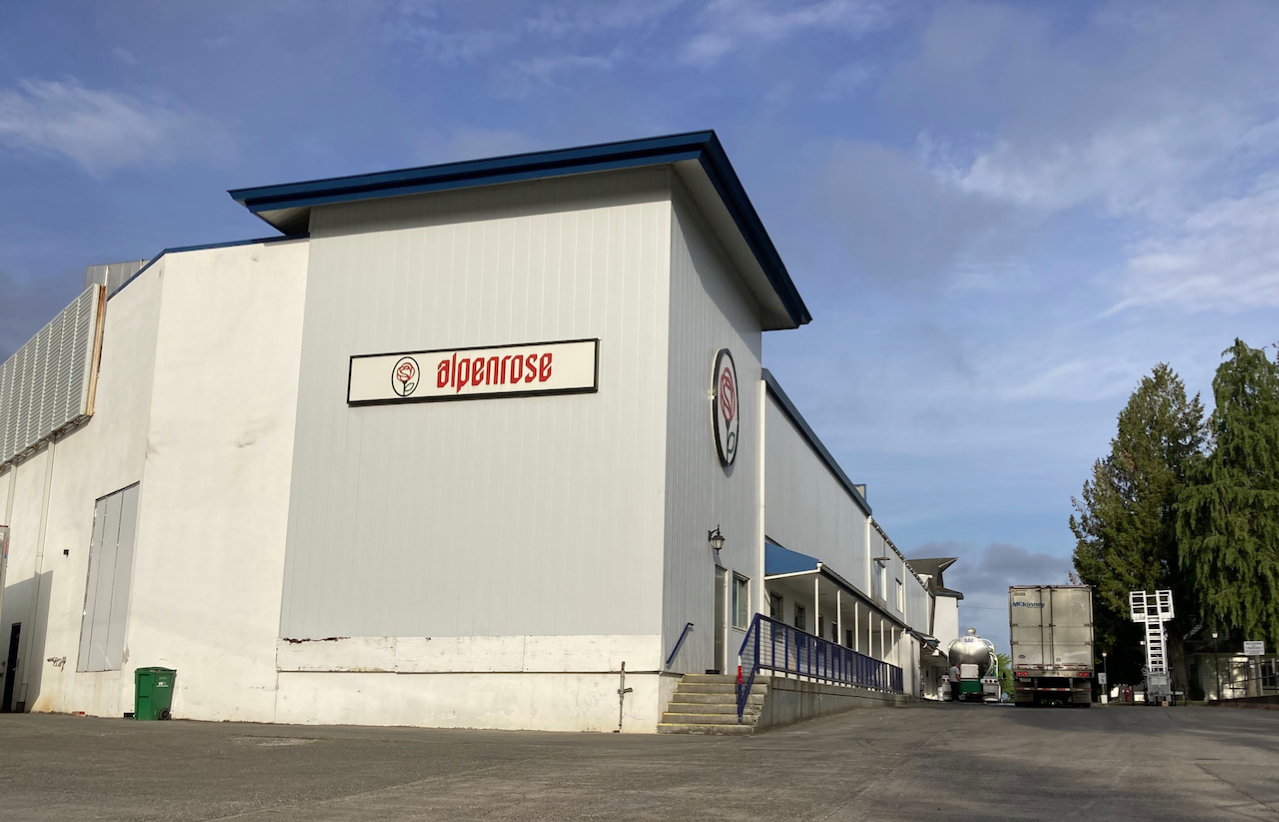


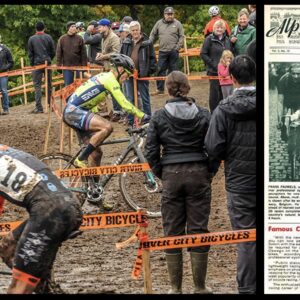
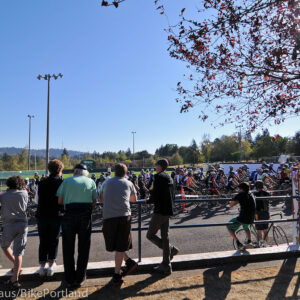
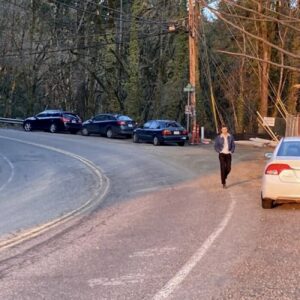
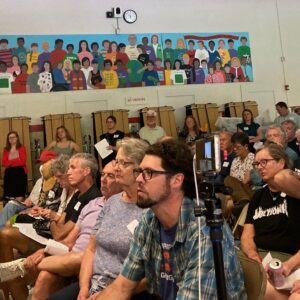
Thanks for reading.
BikePortland has served this community with independent community journalism since 2005. We rely on subscriptions from readers like you to survive. Your financial support is vital in keeping this valuable resource alive and well.
Please subscribe today to strengthen and expand our work.
Any chance that the velodrome could be preserved in that 10% set aside for parks and open space?
Ingalsbe told me they had looked into it, they spoke with OBRA if I remember correcty, but were told it wasn’t possible to keep the Velodrome.
Not possible? Rather, the current owner just doesn’t appear interested in saving the Velodrome pregardless of the community history and utility it provides. The velodrome has value if they donated it to the city in lieu of paying Park SDCs (system development charges). Each home is going to pay between $10,600 and $14,500 depending upon their size. Multiple that by 300+ homes and you have a lot of credits in the bank to reduce your permit costs. Not sure what the feasability issues are, but it could certainly cut down on the developers cost while preserving a community asset.
The parks bureau has explicitly stated they are not interested in buying any land from Alpenronse, even if the current owner was willing.
It’s not possible because the new residents of the proposed neighborhood would not want it. Find me a collection of homeowners that would willingly say, “We don’t mind the additional traffic, parked cars, bikes, trainers, and work stands in front of our houses on race nights.”
It’s sad to lose the velodrome but keeping it in the middle of high-priced homes is not realistic.
Not sure this is entirely correct. Have a look at the Giordana Velodrome in Rock Hill, SC. It was one of the first things built in a development.
Yes. Impossible- to not get maximum profit.
Obviously I have a biased view on this subject as I managed the velodrome as a volunteer since the mid 80s. It would be wonderful if there was a way to retain the velodrome. Velodromes are very rare with only around 20 in the entire country. I have nothing against ball diamonds but even if groups have trouble scheduling time on ball diamonds there are WAY more ball diamonds even when viewed from a per capita user point of view. The catch, of course, is that even a smaller velodrome like Alpenrose takes up a lot of land space.
Alpenrose was one of the busiest velodromes in the country, right up until we were banned from using it. It has now fallen into disrepair but those issues could be addressed with no cost volunteer labor and materials in a matter of weeks, as we did for the last 40 years. Management of the program could also be done at no cost to the property owners, just as we always have. I’m not sure these things could be said about ball diamonds.
200 homes is not going to cause an excessive amount of car traffic. The lack of bicycle lanes and sidewalks will cause car traffic. The lack of mixed uses will cause also car traffic. Where is the corner coffee shop/cafe? where are the walking paths/trails leading to areas with water, sun/shade, places to sit, food and activity? if only houses are built, then everyone will have to leave/drive to get things done… Feels like the city should be able to support ‘higher density, affordable housing on-site, and honor the legacy of the Alpenrose campus by requiring sports facilities, AND adaptive reuse. Commissioner Rubio may be considering “What are the top five requirements the City of Portland should consider suspending or modifying to support increased housing productions?” 1) density 2) mixed use 3) require sidewalks & bicycle facilities 4)signalized crossing to bus stop 5221 5) duplex, triplex, multigenerational, etc.
“Are you concerned about traffic and street design in your community? Are you looking for ways to create healthy communities and improve the local economy through better community design, codes, and placemaking? Do you have an urban highway that prevents economic development and is ripe for replacement with something better? https://www.cnu.org/what-we-do/education-trainings“
Regarding the trails: I believe Portland Parks is planning to finish the Red Electric Trail along the old Southern Pacific ROW (the cut) across Shattuck.
Lisa, can you please provide more details on the Red Electric facility thru the community? Its not clear from the small diagram whether it will be a MUP or a shared street (really needs to be a paved MUP).
Sorry, I lost a link during an edit. I’ve put it back in. It’s to the Parks Red Electric project. I don’t know anything more than that and what Ingalsbe told me.
I would hesitate to call SW Portland a “historically underserved community” when you consider the City’s well documented history red-lining and divestment in other parts of the city…
Other than that, thank you for updating us on the status of the Alpenrose site development.
The phrasing is often “historically underserved and underrepresented,” and southwest Portland is historically overrepresented in city government.
I guess that’s why we in SW Portland have almost no sidewalks or even shoulders anywhere, along with the highest percentage of unpaved streets. We have the worst transportation infrastructure of any part of Portland – by far.
Lisa is absolutely correct that SW is underserved in terms of transportation infrastructure.
That’s a good point that SW Portland has the highest percentage of unpaved streets, I did not realize that. I just know SW has had recent attention with upgrades to SW Vermont, SW Capitol Hwy, and potentially the SW Rail Corridor (if funding is ever realized).
At the end of the day, I do want to see upgrades to Shattuck, but the developers really need to foot the bill for the frontage improvements and on-site stormwater. They stand to make millions developing these massive tracts of land and they are removing the recreation facilities that were huge community assets.
I would rather see public investment targeting improvements to the high crash corridors rather than assisting some greedy developers.
The so-called upgrades to SW Vermont were minimal – just some crappy, lumpy extended sidewalks for a couple hundred yards west of SW 45th, which provide very little connectivity.
The improvements to SW Capitol are just between SW Taylors Ferry and SW Garden Home, leaving several miles untouched.
We get piecemeal improvements – I would hesitate to call them “upgrades.”
That was a choice by the developers. It’s unfortunate that buyers back in the 1960s through 1990s didn’t care about sidewalks. Given the topography, it would be very difficult and expensive to add at this point (see Capitol HWY).
Um – no. Land was developed very differently in the 1960s. My house, for example, was built to order by the property owner. Most houses in SW Portland were built as individual houses, not by developers on spec, as we see today.
You are parroting the city’s line, which is that stormwater related to housing can be handled differently from stormwater related to transportation. They are getting away with it b/c they can.
there are a ton of roads- long, windy, hilly, dead-end roads with low density housing long them that are expensive to maintain, so hardly short on transportation. The problem is it is just for cars/SUVs- peds, bikes, buses are woefully neglected.
Hi Joan,
The narrative that southwest is overrepresented in Portland city government is a strong one. But I recently came across a map that shows that historically most city commissioners have come from the inner eastside of the city.
Here’s a link to an Oregonian feature that lets you fool around with the map: https://projects.oregonlive.com/maps/eastpdx/power/
I’m guessing that the majority of the dots in Laurelhurst/Alameda are towards the beginning of that 1913-2014 time period. The highly desirable (live above the huddled masses) type homes are definitely more in the SW hills now.
No need to guess, chris. The utility shows the new commissioners in 5-year increments, with newly elected commissioners in red.
The narrative that southwest is over-represented is not obviously true using this tool. It only goes up to 2014, so Eudaly and Hardesty are not in graphic, and any other recent councilmember I’m forgetting. Mapps, Rubio…
That map is eye opening and highlights the absurdly hypocritical tendency of progressive inner-PDXers to point fingers at anyone but themselves.
Outer Eastsiders, North Portlanders, and us Southwesterners are all united in our resentment of the Inner Eastside. The place that gets 75% of the services, and yet always demands more, more more, and then tries to gaslight, obstruct, and project (which I like to refer to by the acronym GOP) when called out on it.
It goes back over 100 years. I’m not sure if the geographic location of the councilors in NE during World War II is going to have much impact on the relative representation that someone in Irvington or North Tabor has today.
This is a wonderful map, and highly illuminating as to the sheer hypocrisy and audacity many people who live in the Inner Eastside have to complain about Southwest having too much representation. This is why people who live all over the rest of Portland have so much resentment towards this area of town.
Strongly agree. Comparing something like missing stormwater infrastructure and sidewalks that haven’t been built to wholesale neighborhood destruction doesn’t really sit right with me. There are parts of SW Portland that did suffer from mid century urban renewal (Lair Hill, the former South Portland area), but I don’t really think that is what is being referenced here. Most of SW (the areas roughly west of the crest of the West Hills) directly benefited from projects like I5 – which turbocharged suburban development – at the expense of Albina/the inner city regions.
Honestly, part of the issue at play here is the entirely milquetoast phrasing of “historically underserved” that a place like Albina gets. It was more “actively harmed and destroyed” than “undeserved”. SW Portland was underserved probably only in the narrow sense of stormwater and sidewalks – which I think we would all agree is preferable to the redlining, police violence, and demolition that the truly divested parts of the city got.
Blumdrew, I was being deliberately provocative by using the phrase “historically underserved.” I dislike euphemisms and strongly believe that language should be very precise when discussing policy.
You were precise in your comment above. The historically Black Albina neighborhood was destroyed by I-5 and subsequent “urban renewal” and gentrification. Those actions, together with redlining, denied Blacks generational accumulation of wealth. That’s very real, let’s use the proper language to describe it.
Regarding transportation, I think of sidewalks as the meat and potatoes of city services. The fact that southwest Portland has been part of the City of Portland for nearly half a century and that the city still has done nearly nothing to provide the stormwater facilities that allow for safe pedestrian and cyclist travel is, well, wait for it … an underserving.
Not just SW either. Really the entire west hills suffers this same fate. High speeds, no shoulders, no sidewalks/bike lanes. When you get north of 26 you start running into a more severe lack of alternate routes too.
I for one truly appreciate you setting the record straight on the verbiage being used. Historically oppressed would be better for referring to places such as Albina. Underserved is more accurate for the west hills.
Right now the west hills get ignored because it’s expensive and challenging to address the problems in the hills and because the lack of infrastructure investments gets ignored due to the demographics of the residents. While I don’t have a problem with addressing historically oppressed and lower income areas as a priority, clearly that is very important, I grow weary of the government acting like we’ve got good transportation in the hills. We don’t. It’s a disgrace.
Regarding “underserved” – What’s missing from the discussion is a longer narrative about housing choice and who can afford to live where (or, in the days of redlining, who was even able to live where). People who can afford to live in the SW can often afford to live (and buy!) in other neighborhoods. And not having sidewalks is something they are choosing to deal with (as opposing to choosing to live in a denser neighborhood oriented on a grid. They also can largely afford cars. So I think it’s specious to describe SW Portland as “underserved” and why I really take issue with this characterisation.
Let’s also look at income and car-free household rates in E. Portland vs SW (I know I’m cherry picking, but it’s all I’ve got time for at the moment.) Census tract 93.01 (around Glisan and 160th): 23% of people living in poverty, 54% nonwhite, 22% of households without a car. Meanwhile tracts 58, 61, 46.02, 60.01 (all inner SW) have the following stats: Poverty rates hover around 6-7%, maybe jumping up to 8-11% and car-free rates are 2-8% but usually at the lower end. This is all to support the notion that SW residents are there by choice. To be provocative in my own turn, it’s like the people who move to the countryside and complain about the roosters waking them and the smell of manure.
Plus, while it’s not a question of elected representation, I’ve noticed that places like SW also are over-represented in some public processes. (For instance, in PedPDX’s community advisory group, I think I recall that East Portland had as many seats at the table as did SW, despite SW having a much smaller population.) It’s that sneaky idea of “geographical equity” that I’ve heard some use.
Most people who live in truly underrepresented neighborhoods (such as outer East Portland) aren’t there by choice – for some, they’ve been displaced from more walkable/bikeable communities (N. Portland, Albina). It may also have been the closest they could afford to buy a house, and we know that in the U.S., home ownership is a key to building intergenerational wealth. I speak as someone who (over a decade ago) could afford a house just west of 82nd but no closer and who now could not afford to buy in my neighborhood. I could not afford to buy in SW a decade ago and certainly could not now. Anecdotally, I see people from my neighborhood and those adjacent leaving to move to SW if they can afford to — because of better schools, and less property and violent crime.
It’s also worth noting that property tax compression also means that homeowners in E. Portland also pay more in property taxes than owners of similarly valued properties elsewhere in town. (East Portland Action Plan has some info documenting this.) So E. Portland residents literally get less for their taxes than residents in other parts of town.
Hi Zoe,
I want to thank you for taking the time to write such an in-depth comment, I appreciate it.
You are cherry picking. A lot of Portlanders don’t know southwest Portland very well. People go downtown, they see the beautiful houses on the Portland Heights grid off Vista, they see the martini glass on the hill at Christmas, and that’s about as far as they get.
So yeah, the census tracts you picked are among the most well-off in southwest. Kind of like trying to characterize east Portland by looking at Eastmoreland or Beaumont Wilshire.
As you move further south into the Multnomah neighborhood and closer to Barbur, it becomes more middle class, and poorer in places.
Let’s talk about sidewalks. Small local streets don’t really need a sidewalk. Some people don’t even want a sidewalk on their small local street. When people talk about no sidewalks in the SW we are talking about collectors and arterials—the major streets with a lot of car traffic. Terrible intersections.
Car traffic has increased over the years as the city has grown. Cars have become SUVs, drivers have gotten worse. So no, it’s not like moving to the country and complaining about the roosters. Southwest Portland has by far the least amount of coverage of any area in town. 32%, I think; east Portland is 66%, if I’m remembering correctly.
I can say it till I’m blue in the face, but people don’t seem to be able to get what “no sidewalks” means until they get caught in a dangerous situation, like happened to Mark McClure when he followed AppleMaps directions onto SW Patton Rd.
“Over-represented in some public processes,” you mean like the charter reform commission? LOL. As I remember with the PedPDX advisory committee, one of the southwest women on that committee was vision impaired, am I remembering correctly? So she night have been selected for that committee to include a disabled point of view, not to bring an extra helping of SW.
I think everybody should be able to walk safely. Like PedPDX says in big font (quoting the UN) “Walking is a human right.”
I’m standing by my statement about southwest Portland being “historically underserved.”
Lisa,
Please do not forget the historically Jewish neighborhood of Portland was also destroyed by development during an urban “renewal” project in 1958. Yet all we hear about is Albina nowadays. It’s very odd that Portland is feeling more anti-Semitic even as it races to embrace “racial justice”.
“And then in the late ’50s and early ’60s, a series of highway projects and Portland’s first urban renewal program cut the neighborhood to shreds.The Portland Development Commission declared it a blighted neighborhood, ” Olsen says, and razed 54 blocks
https://www.oregonlive.com/portland/2011/12/tales_of_jewish_south_portland.html
https://www.hadassahmagazine.org/2009/10/23/jewish-traveler-portland-oregon/
Jim G., I don’t ever forget that. It’s just a question of where, which story to work it into. Thank you for bringing it up.
This parcel of land is large, mostly environmentally degraded, and within walking distance of several grocery stores. There should be big apartments there!!!!
I don’t know anything about the water infrastructure necessary but it’s a bummer when an opportunity to house hundreds of families turns into a cookie-cutter subdivision. Is there no technical possibility of improving the water infrastructure? That would seem unlikely.
Is it an issue of priority for funding? If that’s true, we will never make enough housing here, unless we spread horizontally. But that is what the urban growth boundary is meant to prevent, right???
This seems like on me of those times when we’ve lost the forest for a bunch of single family homes.
Charley, sidewalks and widening roads for bike lanes is what there never seems to be enough stormwater capacity to provide. Developers build stormwater tanks onsite to accommodate the impermeable roofs of their buildings. That’s not the issue.
The issue is that the city has neglected to bring southwest stormwater facilities up to a reasonable standard, and it is difficult legally for them to require developers to provide those stormwater facilities for public frontage improvements.
So the city approves the buildings without requiring the frontage improvements.
Why? New subdivisions only two miles from Alpenrose have been built with street lamps and sidewalks. However, WashCo and Beaverton might be paying for it. It is unbelievable that no sidewalks will be built on Shattuck! Why are there so many streets punched thru for this development? More streets means less housing and trees.
Because people need to be able to drive right up to their houses, park their cars, and walk as little as possible. Let no red-blooded Murcan ever walk one step more than absolutely necessary in this Age of Automobility.
What is “Murican”? Oh yes. A classist slur against rural folks. Is it still ok to hate on them?
I have fond memories of my childhood in socialist apartment blocks. We need more of this/these in the USA (and fewer loan-owner mcmansions).
Don’t disagree that there should be more mid-rise apartment buildings. But specifically with those Soviet Khrushchevka, better cross your fingers you’re not in them during an earthquake.
Lots of earthquakes where I lived. Could you be any more ameriKanski, tho.
I’m thinking specifically of the 1988 Armenian earthquake where substandard construction was a noted contributor to the death toll. But the same could be said about the more recent quakes in Turkey or China. Unless they are constructed well, multistory concrete buildings just don’t do very well in earthquakes.
Look no farther what the reality would look like at Alpenrose than the new development by the same developers going in at SW 48th and Pendleton. Giant 3,000 sqft houses selling for $1.10 million.
I don’t think that will be the reality. If you look in that area I found two homes of new construction in the same price range. They had about the same square footage but bigger lots. Both have been on the market for 250 days. What you find is the pool of buyers shrinks at a certain price point, and though they may sell that can take months sometimes years. If your going to build 200 homes no developer wants to sit on them that long.
https://www.zillow.com/homedetails/4740-SW-Pendleton-St-LOT-3-Portland-OR-97221/2057570881_zpid/
$1.10 million for giant 3,000 sq ft houses. Same developer is going to develop Alpenrose. The only thing that would allow produce different results is if the city grants them the zoning amendment to go from R10 to R7.
Yep – that’s the new development at the back of Hayhurst School. Look at the one going up at SW 45th and Garden Home, on the former site of the Catholic church (Our Lady of Fatima?). You’ve got seven very tall new houses standing in a row – hardly room to walk between them. And they’ll be selling for $700-800k a piece.
I always say that in Portland we don’t have a housing policy – we have a developer profit-maximization policy.
If the City would allow/encourage/require building a large enough complex of apartments/condos on this parcel, I bet there would be plenty enough profit to pay for sidewalks and bikelanes. That’s the whole benefit of building up! More families housed = more potential for profit.
Charley, the expense is not the bike lanes or sidewalks, it’s the stormwater treatment that they require which is expensive.
BES spent $14M putting in the stormwater basins and pipes for the Cap Hwy project.
20 years ago Portlanders spent $1.4 billion for the Big Pipe project which we pay for in our rates. It’s expensive. Except for downtown, however, SW is not part of the Big Pipe system, the area’s stormwater drains to streams.
Thank you soooo much, Lisa, for staying on top of this story.
When I see a comment from the city like this one:
my next thought is: Then why are you allowing any development to proceed at all??
Really what they are saying is something like “We need housing so badly that we’re going to suspend any and all requirements to get that housing – transportation, environment, safety, livability be damned.”
Later when we want to add a bike lane to Shattuck – a death trap of a stroad (I’ve had 4-5 near misses there myself) – they’ll say, “Sorry but we have stormwater requirements and we can’t meet them – even though we just allowed 25 acres of impervious roofs and driveways next door.” It’s so maddening.
Having exclusionary housing policies that limit population to fix traffic is not an effective strategy.
Neither is simply flooding the region with devlopment and abdicating all rsponsibility for the consequences.
Apres moi, les deluges!
Greedy loan/home-owners and the staggeringly massive subsidies they received from the state and federal government are a primary source of ever increasing inequality and people living without adequate shelter, nutrition, medical care, education, livelihood.
Quand les gens n’auront plus rien à manger, ils mangeront les riches et les propriétaires.
No. The transformation of housing into a commodity is the issue – there are homes in places you would assume should be cheap, and they are just as unaffordable as Portland is, relatively speaking as they are purchased by REITs. Too much wealth at the top is another; people able to buy multiple condos and use them as assets rather than residences are a plague.
Not to mention RENTER GOOD! HOMEOWNER BAD! is a really weak argument. I found plenty of corporate rentiers getting subsidies and furthering inequality…
I appreciate the attention to local issues and individual developments like this, the missing sidewalk building, etc. But I, like many other commenters, feel a need to respond to your last paragraph. You blame the county and the city for the underdeveloped infrastructure of the southwest area, and you’re not wrong. But the biggest beneficiaries of the lack of infrastructure in this area are the original developers and the people who bought houses from them at discounted rates due to the lack of infrastructure costs for the developers, and the next biggest beneficiaries are the people who bought the houses from the original owners at deflated prices due to the diminished cost as a result of the lack of decent infrastructure provision. There is no right to own property, and there certainly isn’t a right to develop it. People who own property have certain obligations to the public, and if that obligation was waived by corrupt politicians, the sad truth is that the successors of the original beneficiaries have a higher obligation to rectify the deficiency than the general public has.
So why don’t southwest homeowners advocate for a benefit district in which they’re taxed at a higher rate, the proceeds of which go to infrastructure investments in their district?
That exact argument has been used before in regard to paving streets and building sidewalks on the east side.
There’s also a slight variation–“It’s not fair–I paid a premium to live in a neighborhood with sidewalks (or libraries, schools, parks, fire stations…). So why should my taxes go to pay for any of those things in neighborhoods in Outer Southeast (or wherever) where people didn’t pay a premium?
And DO property owners have an obligation to provide sidewalks in their neighborhoods? Why? What about parks, schools, etc.? Do they have an obligation to provide those also?
A home on SW Hawthorne Terrace built in the 1880s (care to do monthly repairs?) has a property tax over over $112,000 per year. What home in Lauerlhurst or Irvington or Ladd’s Addition has that kind of property tax?
Rick, I’ve never done the research to check it out myself, but maybe you know.
I’ve been hearing over the years that SW pays a higher property tax rate than the rest of the city. Do you know more about that?
I just looked at SW Hawthorne Terrace on portlandmaps.com. I clicked on the largest property I saw. The property taxes were $126K, so slightly higher than your example.
But it’s 1.17 acres, with a tennis court, swimming pool and multiple buildings. The main house is 12,000 sf with 10 bedrooms. The market value is over $8 million, and the assessed $4.7 million. It’s a National Register home built by the Pittock family.
In other words, homes in SW with assessments as high as your example are some of Portland’s most expensive residential properties. If there are no homes in Laurelhurst, Ladd’s Addition or Irvington paying such high taxes, it isn’t surprising. There may be no homes there with such high market values.
You could actually argue the other direction. My example is taxed on an assessed value less than half the market value–which isn’t unusual–but it’s $4 MILLION less. What other neighborhood has homes where $4 million dollars of their market value is not taxed?
My impression over the years is that SW homes–generally–ARE taxed closer to their current market values than homes in other areas. That may be true or not. But I wanted to point out that taxes as high as your example are way beyond anything typical in SW.
I
What historically-designated single family house in Esstmoreland, Irvington, Ladd’s Addington, Alameada, or Laurelhurst has a property tax over $125,000 per year? There are several homes in those neighborhoods with over 1/4 acre. Southwest’s BHH is crumbling away. Same with West Burnside and Northwest’s Cornell.
I’m guessing no single family houses in those neighborhoods have taxes that high. But that’s because I can’t think of any homes in those neighborhoods that are have a market value even close to the $8 million dollars of my example that had the $125K tax bill. And I’m not talking about actual market value–what the house wold realistically be sold for.
And my example was 1.17 acres, quadruple the 1/4 acres you mention.
If you want to argue that homes in SW are overtaxed compared to homes elsewhere, a relevant statistic might be that homes in SW are taxed at a higher percentage of their actual market value than elsewhere (which I believe may be true).
But saying that there are homes in SW that have higher tax bills than homes elsewhere, when those SW homes are worth more, doesn’t say anything about taxes in SW being higher than they should be compared to elsewhere.
Think of how many desperately needed homes could be built on that property.
Expropriate all mansions and yachts and build public housing!
Exactly. So much housing and jobs could be built on the land in the private clubs in both Irvington and Ladd’s Addition. Portland provides street sweepers in neighborhoods with curbs.
The walking environment on 82nd Avenue is like NW 23rd Avenue in comparison to walking nearly anywhere on SW Barbur Boulevard.
Through-streets should not be punched through for cars for this development. Also, Beaverton needs to build the paper street trail on nearby SW Vermont Street!
Why can’t this be turned into a community for the homeless? Much like McMennamin’s Edgefield used to be?
Because developers don’t make any money from the homeless.
You’re kidding right? Developers make huge money from the homeless industrial complex. Have you heard of the $28 million dollar Buri Building that was just built?
https://www.wweek.com/news/2023/06/07/a-28-million-low-income-apartment-complex-descends-into-chaos-in-just-two-and-a-half-years/
307 new homes? All I hear is how people are moving out of Portland because it’s so bad.
Why not take all that money developers pay the city in lieu of sidewalks and pool it to fix issues in SW? Because they take it and spend it downtown and on the east side. PBOT grudgingly digs in the couch cushions to find funding for SW despite it being perhaps the major contributor of in-lieu. State law prohibits them from saying ‘all fees collected in SW must be spent in SW,’ but nothing PREVENTS them from spending some there. SW pays for much-needed work elsewhere, but is told they are ingrates when asking for pennies to be returned.
I am finding it fascinating how many are arguing the city’s line: that SW pedestrians deserve no safety improvement – because it would be hard, would cost money, or they suck because of where or how they live. SW is told AT BEST they will get a shoulder to walk on, yet many here cry for better or total separation of cars from bikes in their neighborhood.
Just remember every damn car a SW’er must drive because they can’t walk/bus somewhere is a nail in the climate’s coffin.
There’s also the general nature of such money, that it tends to be put into general funds in cities nation-wide. Or as with transportation, it’s not spent on the source of the funds, but elsewhere out of political preference, often not that of the public generally. Again, that’s nation-wide, not just in Portland metro.
I grew up blocks away from the diary and my mom still lives there so I am very familiar with the issues around the diary.
First of all, when the diary was running at full capacity making products under their own brand, for Albertsons, United Grocers, and for Baskin Robbins, you had an extremely dangerous situation due to all the 18 wheelers and milk tankers driving on a road with no sidewalks. I had close calls multiple times.
Frankly traffic from 200 to 300 new homes doesn’t concern me. It’s not like they are a leaving at once. Shattuck can handle the traffic. Anyone who says it can’t is either spreading fear or doesn’t know what they are talking about.
However, the city should have added sidewalks to Shattuck years ago and should take this opportunity to either make the developer pay for all of it or a significant portion. Shattuck also connects to Garden Home and the Fanno Creek trail. It can be an important component of a solid regional bike network and would leave the right legacy in light of the loss of the velodrome…which should be rebuilt at Gabriel Park.
Historically NEGLECTED
What’s the difference?
We need a Lisa for St. Johns, for the numbers, for Foster-Powell, etc.
If this development goes up without full access for active transportation it’s another hole in a potential network and, even worse, a precedent for the next project.
There will *never* be a better and more cost effective time to put these features in place. I expect that there will be a time when the need is finally understood. The cost of providing pedestrian and other human scale access will be much greater if it’s put in after development. This final clarity may arrive when the available resources are smaller than they are now.
If the project doesn’t pencil out with the cost of sidewalks and storm water management, that’s no reason to tax the future.